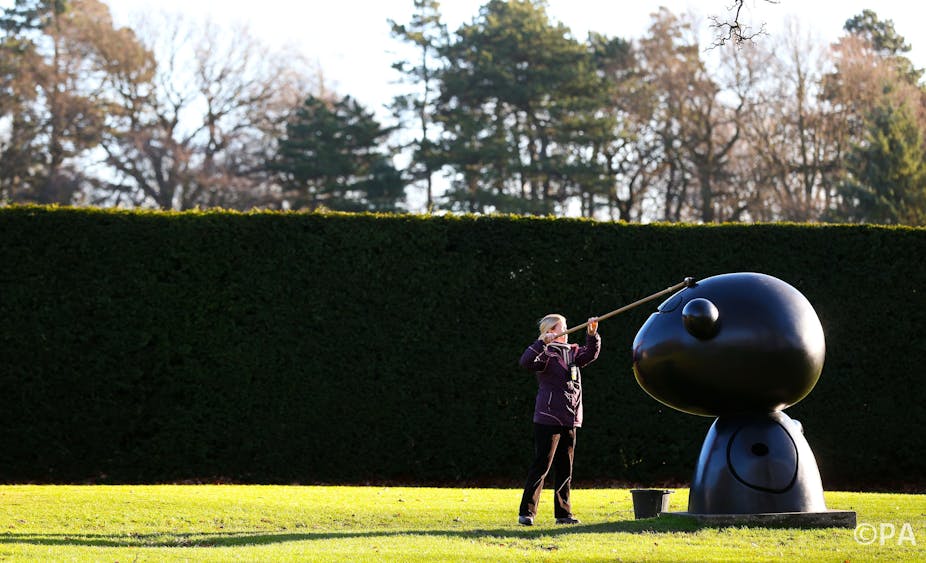On July 9, the annual Museum of the Year Prize, run by the Museum Prize Trust and sponsored since 2008 by the Art Fund, awarded £100,000 to the winner: the Yorkshire Sculpture Park, which shone in a shortlist of six museums and galleries.
The prize’s stated aim is to highlight the role of museums in society, to encourage more people to visit and to recognise the very best exhibiting institutions in the UK – but pinning down the characteristics of what the Art Fund calls “truly outstanding” museums is harder than it sounds.
As someone who studies museums, I have strong opinions about what makes a good one. To get my vote, a museum has to be prepared to take some risks, to remain intellectually (and physically) accessible while challenging its audiences. It should present different views and ideas and avoid neutrality, or rather, refrain from perpetuating the myth that the museum (and knowledge) is objective – we know it is not.
Museums with these characteristics are inspiring. They will also probably play a role in society that encompasses, as the UK Museums Association puts it, not simply just the collection, preservation and sharing of collections (although these of course remain core roles).
They will also act as catalysts for community cohesion and regeneration, and be places where social issues can be publicly explored.
What matters?
That said, everyone has a different opinion, as do many of my colleagues. When I asked them what makes a good museum, they all had different answers. It should have a clear identity; it should have an environmental conscience and a commitment to sustainability; it should be innovative and involved with its local community.
This was hardly a scientific poll, of course, but the range of answers I got highlights the considerable impact individual preferences and priorities have on perceptions of what a good museum does.
Pinpointing excellence in the museum sector is a tricky business, and is partly (if not entirely) shaped by the concerns and policies of the day. The Art Fund’s five-person judging panel will select the winner for the Museum of Year Prize, from six shortlisted institutions, each judged to have had a “transformative” effect on their users and audiences.
The big six
The Ditching Museum of Art + Craft in East Sussex presents examples of work by artists and craftspeople who formed a community in the village during the 20th century. In recent years, the museum has undergone major renovation and reopened last year. It has been praised by the judges for its “dedicated learning space” and fully accessible site.
The Hayward Gallery, on London’s Southbank, has been dedicated to displaying contemporary art since its creation in 1968. Its touring programme and exhibitions, which focus on “important issues in contemporary artistic practice”, attracted “record-breaking audiences” in 2013.
Opened to the public in May 2013, the Mary Rose Museum in Portsmouth, houses the remains of Henry VIII’s flagship, sunk in 1545 and recovered in 1982. Its selection recognises the engaging and “intensely personal nature” of the museum’s narrative, which provides visitors with “an inimitable insight into Tudor life”.
The Sainsbury Centre for the Visual Arts, Norwich, designed by Norman Foster to house the Sainsbury collection of art and artefacts and opened in 1978, relaunched last year after major renovation. The new SCVA features a redisplay of the permanent collection, and new exhibition and retail spaces.
Similarly, the oldest part of Tate Britain was restructured to bring nine galleries up to contemporary standards, and to allow for the creation of new spaces for schools and learning activities. On reopening, visitors were also able to experience a new chronological display of British art.

And finally, the winner: the Yorkshire Sculpture Park in Wakefield, which features works by major sculptors from around the world. Among other things, it was highlighted by the judges for “engaging new audiences and providing a unique art experience for hard-to-reach groups” via its learning programmes.
More than money
In addition to the cash prize, Yorkshire Sculpture Park will benefit from an enhanced profile and wider public recognition – and in turn, a more secure future, something the Prize has done for winners before.
Last year’s victor, the William Morris Gallery in Walthamstow, had been been under threat of closure just six years earlier. But after winning the prize, the gallery experienced a massive increase in visitor numbers, which the local head of cultural services hoped would bring increased funding and stave off the threat of future cuts.
Just as we all came up with different definitions of what makes a “good” museum, I expect me and my colleagues would each have a strong opinion about which of the shortlisted museums most deserves to win the prize. We may not all fully agree with the final decision, but ultimately, anything that gives “immediate national attention” to museums, promotes excellence in the sector, and demonstrates their immense social and cultural value deserves our wholehearted support.

